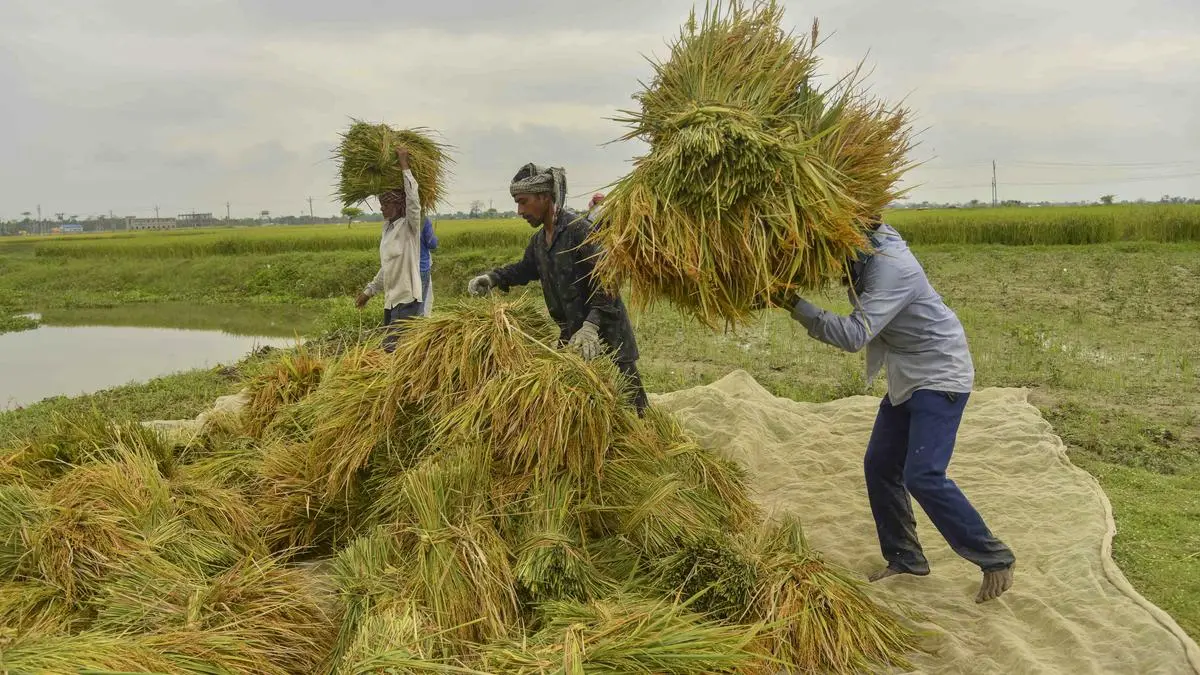
Rice production: Mixed bag
India is emerging as the top rice producer in the world (over 140 million tonnes). This is very good news. A rice buffer stock of 55-65 million tonnes has staved off hunger (with extreme poverty just at 2.3 per cent of the population, according to World Bank estimates, derived from Household Consumer Expenditure Survey data). As the HCES data suggests, rice-dominated food transfers to over 80 crore people have enabled the rural population to increase discretionary consumption. However, this comes with a price: the ecological costs of cultivating paddy.
The challenge now is to produce about the same level of paddy (given food security needs) on less land, using less water and inputs. In this regard, ‘gene edited’ varieties of existing strains, which are expected to ensure that 10 million tonnes of more paddy are produced on five million less hectares than at present, hold out promise. They are billed to mature early, requiring less use of water, increase yield and be drought resistant. However, these seed varieties should be priced at affordable rates to small farmers. Direct seeded rice, which as the term suggests does away with transplanting, offers similar benefits, as does SRI (System of Rice Intensification). However, these require some amount of soil preparedness in terms of texture and organic content. Besides promoting these methods (SRI may not have received the push it deserves), indigenous varieties must be revived for their resilience to weather extremes as well as their nutritional value.
The Indian Council of Agricultural Research, as its own studies suggest, does not seem to have broken out of the Green Revolution paradigm to focus adequately on climate resistant and sustainable strains. Despite the release of such strains in recent times, good old sona masuri and its variants hold sway. Producing a kilogram of rice could require more than 3,500 litres of water. With India exporting nearly 20 million tonnes of rice in FY25 (14 million non-basmati), this amounts to an export of large quantities of water. The use of rice for making ethanol amounts to the ironical use of energy (pumping water out of the ground) and water to produce energy. Punjab, the third largest rice producer, has been growing more of the crop than it should, depleting its water table. The same holds true for dry regions in Karnataka and Andhra Pradesh.
In this scenario, oilseeds and pulses must be given top priority. Edible oils ($17.3 billion) and pulses ($5.4 billion) imports touched nearly $23 billion in FY25. The rise in rice acreage, from 44.1 million hectares in FY15 to 47.8 mh in FY24, can be stemmed by making the cultivation of pulses and oilseeds more attractive. Increases in minimum support prices have proved ineffective to this end, in the absence of timely procurement. The entrenched status quo of systemic support for rice and wheat, at the expense of other crops, must be disrupted.
Published on May 23, 2025
Anurag Dhole is a seasoned journalist and content writer with a passion for delivering timely, accurate, and engaging stories. With over 8 years of experience in digital media, she covers a wide range of topics—from breaking news and politics to business insights and cultural trends. Jane's writing style blends clarity with depth, aiming to inform and inspire readers in a fast-paced media landscape. When she’s not chasing stories, she’s likely reading investigative features or exploring local cafés for her next writing spot.






